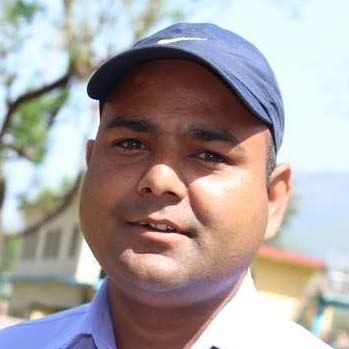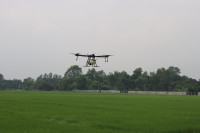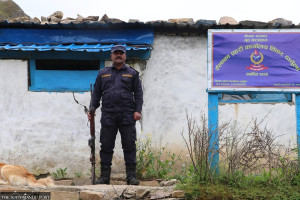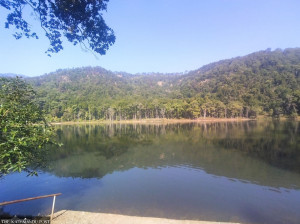Sudurpaschim Province
Hilsa border quiet for fifth year as Manasarovar pilgrimage stays closed
China’s post-Covid reopening of the Hilsa border hasn’t revived the local economy as the absence of Kailash-Manasarovar pilgrims, mostly from India, continues to hit hoteliers, local businesses, and airlines hard.
Krishna Prasad Gautam
Despite the reopening of Hilsa border point on the Nepal-China border in April last year, the closure of the Kailash-Manasarovar pilgrimage route has left the Hilsa area eerily quiet for the past five years.
The Hilsa border crossing was officially reopened on April 30 last year but the Chinese government has yet to lift its restrictions on pilgrims travelling to Mt Kailash and Mansarovar. Since the outbreak of the Covid pandemic, China shut down access to this sacred site, halting what used to be an annual influx of nearly 15,000 pilgrims, mostly Indians, from May to October.
The route through Hilsa gained popularity after the 2015 earthquake, which led to the closure of the Tatopani border. Since 2006, Indian pilgrims had increasingly favoured the Hilsa route for their spiritual journey. However, the continued closure of the Kailash-Manasarovar area has had a profound economic impact on western Nepal, particularly the Humla district.
Last year, in response to the ongoing restrictions, Indian travel operators such as Trip to Temple and Kathmandu-based Pathil Holidays arranged mountain flights to offer aerial views of Kailash-Manasarovar from the skies above western Nepal According to Mahesh Gautam, Managing Director of Pathil Holidays, around 440 Indian pilgrims took part in these flights via Shree Airlines. However, due to high operational costs and declining interest, the service was discontinued.
“Every day, we receive calls from Indian pilgrims requesting assistance for the Kailash pilgrimage, but there is nothing we can do,” said Gautam. “Coordination between the governments of Nepal, India and China is urgently needed.”
The mountain flights helped boost occupancy in Nepalgunj hotels for some time. But as the route remained closed, business dried up. “Nepalgunj had started developing as a transit hub for Indian pilgrims. Big hotels were opening up, but the economic activity has since sharply declined,” said Keshav Neupane, Regional Director of Siddhartha Business Group of Hospitality. “Most hotels are now empty.”
Local tourism entrepreneurs in Humla, a mountain district of Karnali Province, echo this concern. Bijay Lama, a hotelier in Simikot, emphasised the urgent need to reopen the Kailash-Manasarovar route to revive the regional economy. “Several large-scale hotels were built in Simikot anticipating Indian tourists. For the first couple of years, business was good but once the Chinese closed the route due to the pandemic, everything came to a halt,” said Lama,
According to Lama, despite repeated appeals through the district administration to the Ministry of Foreign Affairs and the Office of the Prime Minister, their concerns have been ignored. “Before the pandemic, nearly 15,000 Indian pilgrims would pass through this route annually,” he added.
During the early phase of the border closure, an alternative was offered to pay homage to Kailash from Lapcha in ward 6 of Namkha Rural Municipality. Around 781 Indian pilgrims and 489 third-country tourists viewed Kailash and Manasarovar from this remote Nepali location in two years. However, according to Prem Bahadur Lama, chairman of Namkha Rural Municipality, the route failed to attract many pilgrims. “Indian pilgrims want to reach Manasarovar itself, not just observe it from afar,” he said.
Local government representatives say the tourism industry in the district has collapsed due to the restriction on Kailash-Manasarovar visit. “Although China reopened the Hilsa border, it still hasn't allowed access to Manasarovar. Hotels are empty, local goods have no market, and investments in tourism are at risk,” said Shiva Raj Sharma, chief of the District Coordination Committee in Humla.
While the 95-km road from Simikot to Hilsa is now fully operational, Sharma says Nepal has been unable to benefit from it. “On the Chinese side, development has surged. But here, hotels remain deserted, there's no customs presence, no government staff,” he said. “The federal government must act diplomatically to resolve this.”
Before the pandemic, Indian pilgrims traveling through Humla would often buy local products like beans, walnuts and apples as gifts. Now, with the route closed, those local goods struggle to find buyers.
Airport records from Humla show that, prior to the pandemic, airlines like Tara, Sita and Summit were operating up to 40 flights daily between Nepalgunj and Simikot to transport pilgrims. Chief District Officer Narayan Pandey stressed that reopening the pilgrimage route is crucial to revitalizing Karnali Province’s tourism.
“Now that the road reaches all the way to the Chinese border at Hilsa, travel would be much easier,” Pandey said. “Before, Indian pilgrims used to walk for ten days to reach Kailash. If the route reopens, road travel will make things much more convenient.”
Manasarovar holds deep religious significance for Hindus, Buddhists, Jains and Bon followers. Although the Chinese government traditionally opens the pilgrimage route from April to September each year, the route has remained closed since March 2020. Last year, the Nepali government reopened the Hilsa border, but the absence of pilgrims has left the area lifeless.
According to hotel operator Namdel Lama, around 35 hotels—including nearly two dozen built for tourists—are now sitting empty. “This is the main route to Kailash-Manasarovar. Even though China reopened the border, they haven’t permitted Indian pilgrims to enter,” he said. “Other foreign tourists aren’t coming either, and even local residents aren’t allowed to cross into China.” Investments in Hilsa hotels range from Rs 1 million to 20 million, Lama said.
While local labourers continue to use Hilsa to reach the Chinese town of Taklakot for work, even that is limited. According to CDO Pandey, about 7,000 people have received temporary permits to work across the border. However, returnees are currently only allowed to bring back one sack of goods. Negotiations are ongoing with Chinese officials to relax this restriction.
Pandey said that three rounds of meetings have taken place this year between Nepali and Chinese authorities—including the immigration department chiefs and security officials—in hopes of resolving the issue.




 15.12°C Kathmandu
15.12°C Kathmandu












